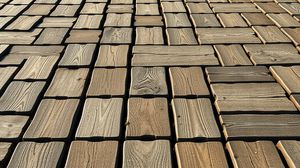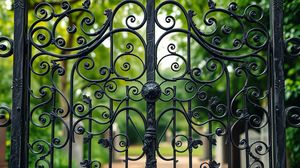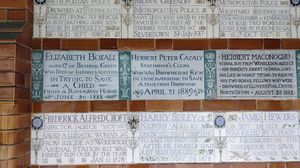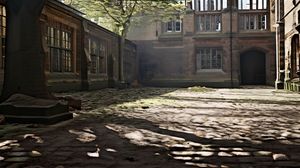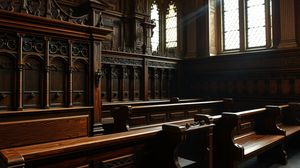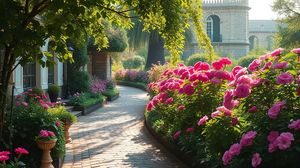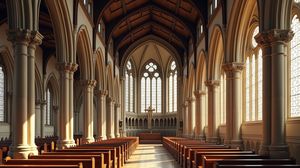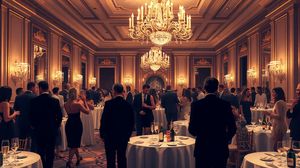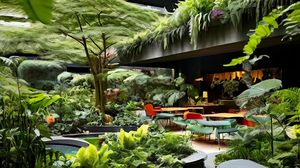
The Barbican Centre in London is a testament to the bold architectural vision of the post-war era, offering a sprawling complex of cultural, residential, and commercial spaces. Known for its Brutalist architecture, the Barbican stands out with its rough concrete structure, showcasing a distinctive style that contrasts sharply with the city's more traditional architecture.
Opened in 1982, the Barbican Centre is one of the largest performing arts centres in Europe, housing a variety of spaces including a concert hall, theatres, cinemas, a library, and even gallery spaces. It serves as home to the London Symphony Orchestra and hosts a diverse array of concerts and performances by internationally acclaimed artists.
An intriguing feature of the Barbican Centre is its interior garden, known as the Barbican Conservatory. This hidden tropical oasis houses over 1,800 species of tropical plants and trees, providing a lush retreat from the hustle and bustle of city life right within the heart of London.
The Centre also features an impressive art gallery known for hosting major exhibitions, from the works of modern art masters to rising talents. Past exhibitions have included retrospectives of celebrated artists such as Jean-Michel Basquiat and AI Weiwei, making it a must-visit for art enthusiasts.
Beyond the arts, the Barbican's design itself is of great interest. The architects, Chamberlin, Powell and Bon, designed the Centre with labyrinthine walkways and high walkways known as 'pedways.' These were initially intended to keep pedestrians above the congested streets, offering a unique perspective and navigation experience.
One particularly quirky aspect is the Centre's expansive network of underground service tunnels, which were originally designed to facilitate discreet movement of performers and equipment without disturbing public areas. These tunnels highlight the complex and thoughtful design and engineering that went into creating the Barbican.
The Barbican Centre's influence extends beyond its walls as well, sparking debates about urban design and the preservation of Brutalist architecture. As a Grade II listed building, it stands as a significant cultural and architectural landmark, representing a pivotal period in London's development.

Making the Most of Your Visit:
Take your time to explore the Barbican's Conservatory! This is one of London's hidden gems, only open on select days (usually Sundays). With over 1,800 species of plants, it's a tranquil escape from the city's hustle and bustle. Check their schedule for any special tours or events happening during your visit.
Don't miss the chance to stroll through the high-level 'pedways.' They were designed to lift pedestrians above the city streets and offer a unique vantage point to admire not only the Barbican's architecture but also views of the surrounding area.
If you're a history buff or love architecture, take note of the Brutalist details throughout the Centre. The Barbican offers informal self-guided tours, so grab a map from the information centre and do a bit of architectural detective work on your own!
Keep an eye on the Barbican's cinema for special screenings and film festivals. They often run retrospectives and special events that you won't find anywhere else, perfect for any film enthusiast.
If you're visiting during the weekend, consider catching The London Symphony Orchestra during their residency here. Not only is it a sonic delight, but the acoustics of the Barbican Hall are renowned for being some of the best in London.

Visiting Times & Costs:
The Barbican Centre is typically open to the public throughout the week, although specific times can vary depending on the area or event. Generally, the Centre opens from morning until late evening, with variations for different performances and exhibitions.
Opening Hours
- General Building: Typically open from morning until late evening. Check specific times for individual venues within the Centre.
- Conservatory: Open on select Sundays, and sometimes on other days for special events.
Admission
- General Admission: The Barbican's public spaces, including the lobby areas and library, are free to enter.
- Exhibitions and Performances: Prices vary for exhibitions, concerts, and theatre performances. Specific fees depend on the event.
Accessibility
The Barbican Centre is committed to accessibility. It offers facilities and services to assist visitors, including:
- Wheelchair accessibility throughout most areas of the Centre.
- Accessible toilets are available on each level.
- Assistance for hearing-impaired and visually impaired guests, such as assisted listening devices and touch tours for selected events.
- Guide dogs are welcome.
Recommendations:
For the most up-to-date information on timings, ticketing, and accessibility services, visitors are advised to check details prior to their visit.

Address & Map:

Nearby:


